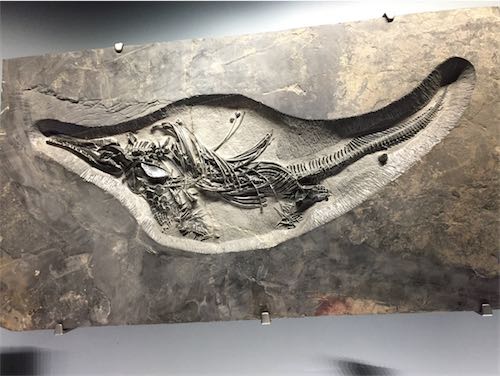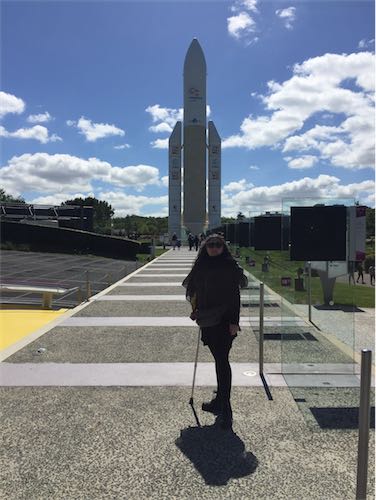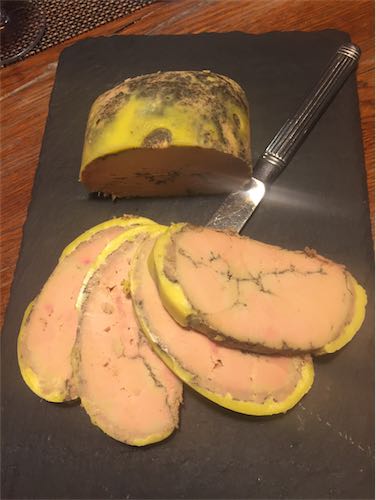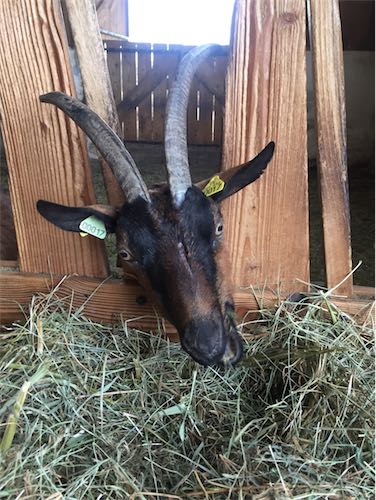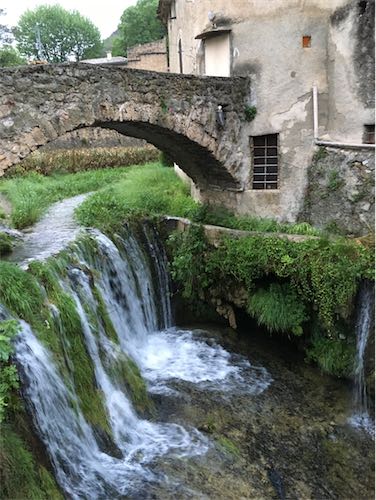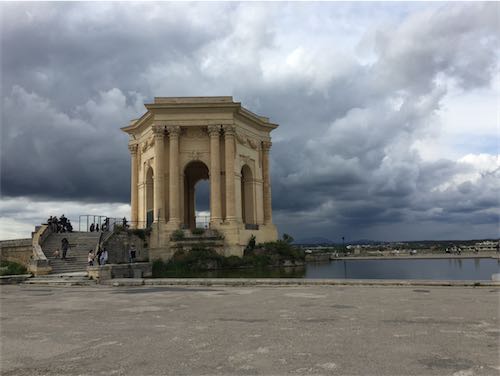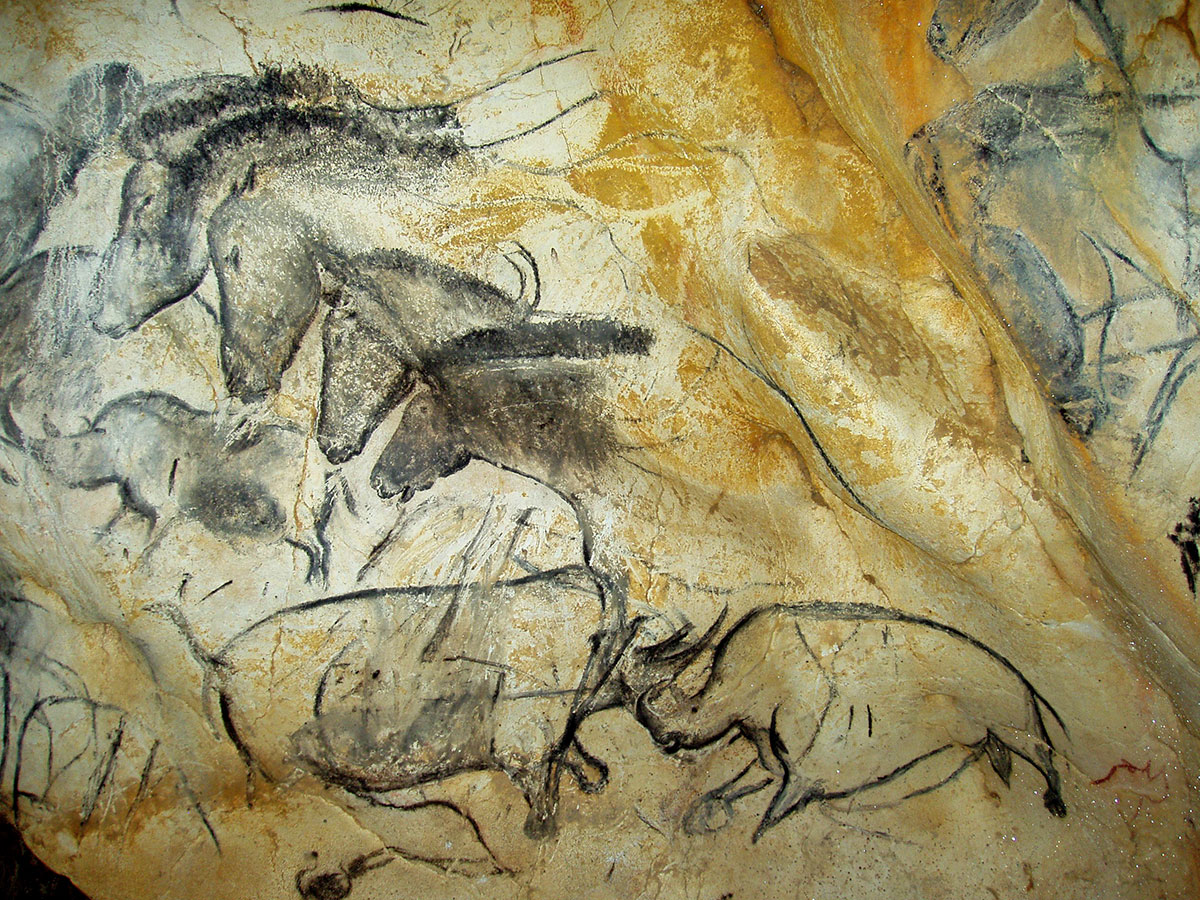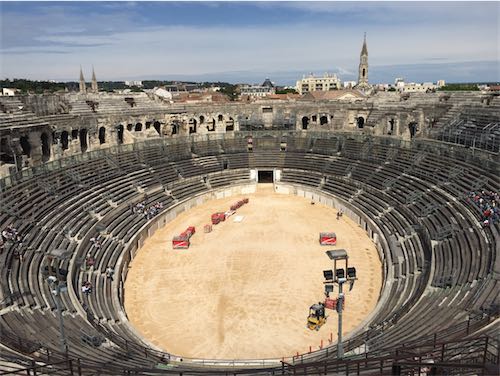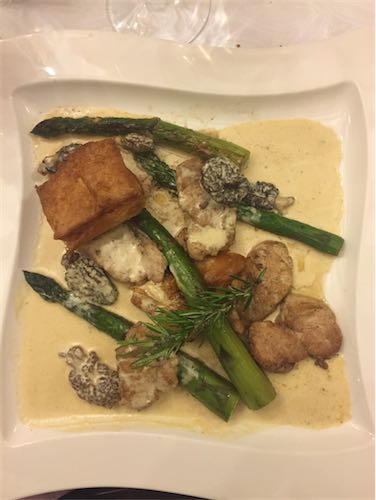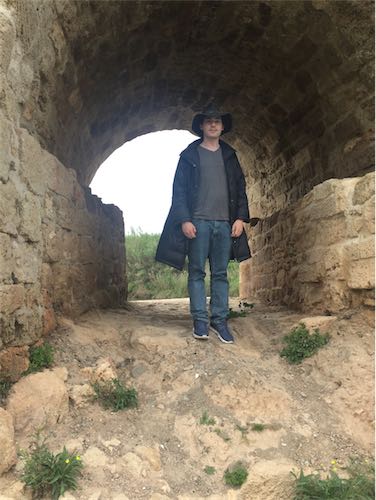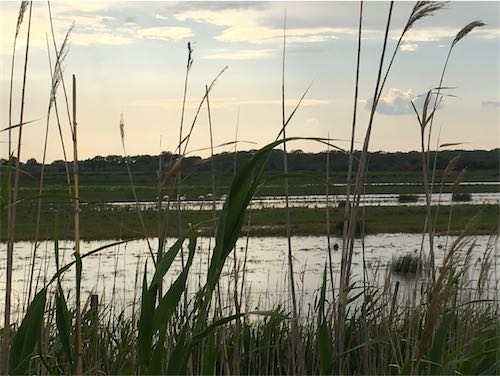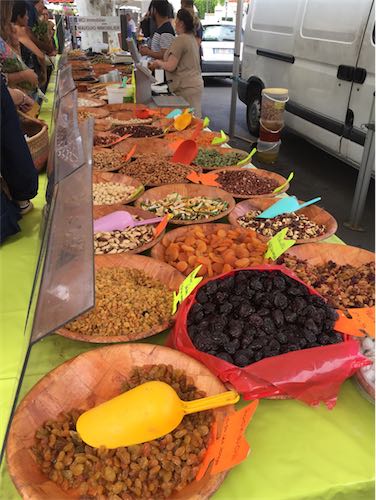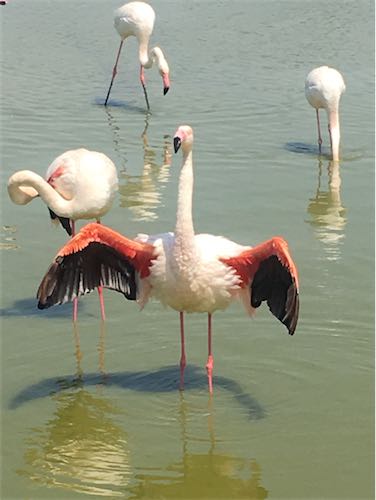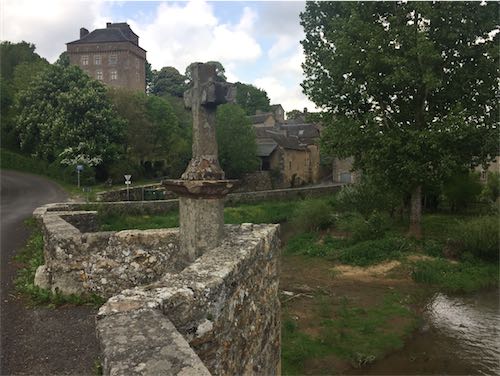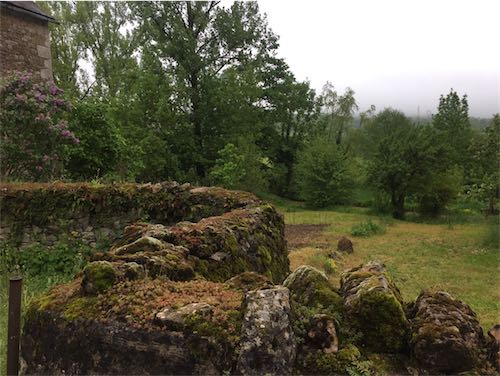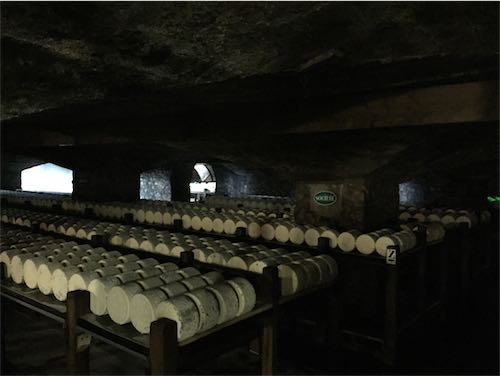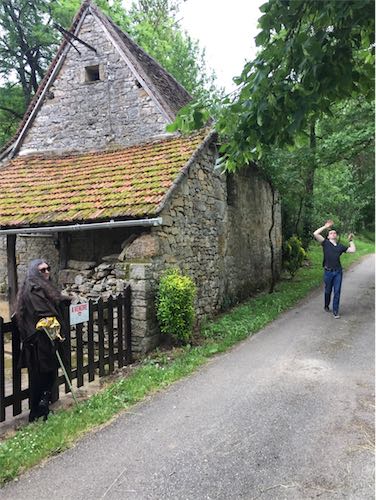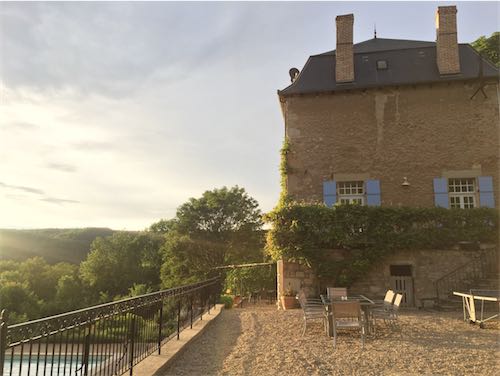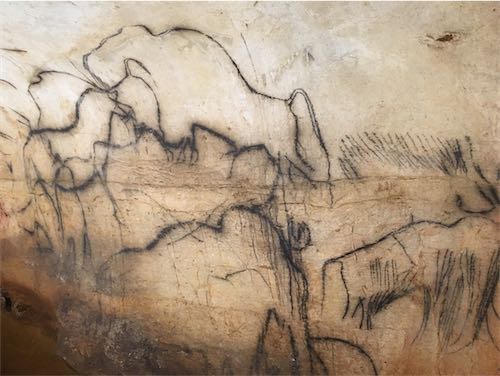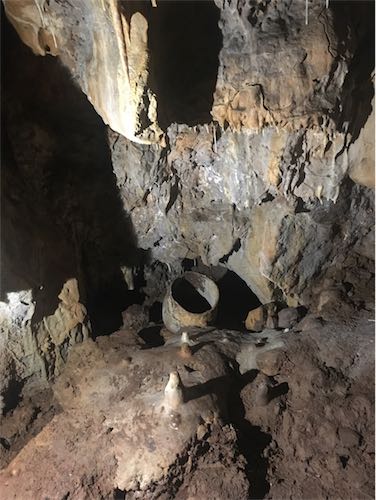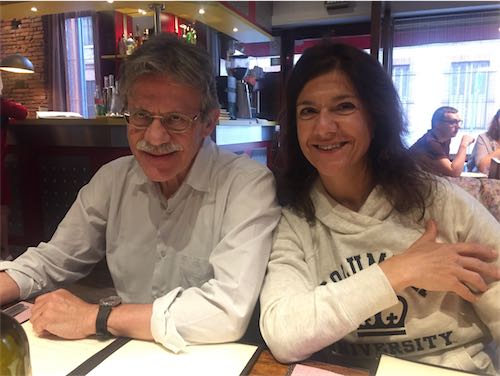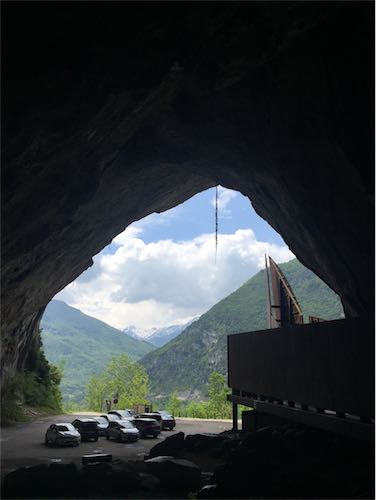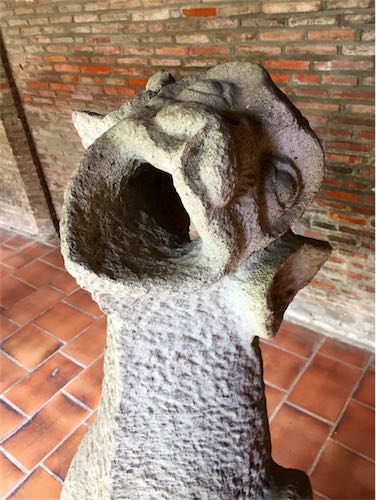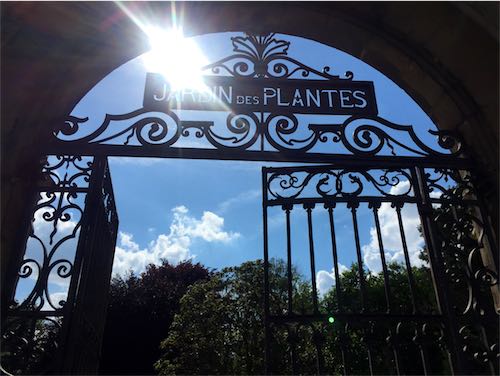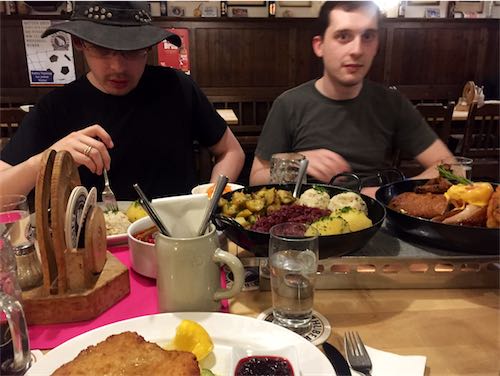Day 25 — Toulouse; Musée des Augustins Airbnb Rental — 5 Rue Antoine Darquier 31000 Toulouse. map
While the kids slept, Christopher and I drank coffee, ate croissants, and watched the royal wedding of Prince Harry and Meghan Markle on Christopher’s laptop. Nobody does ceremonial pomp like the British! While the happy couple said “I do,” the sun finally emerged after days of dark skies and rain.
We had plans to go to a museum together with Theodora and Theodoros but I got a text message that “after last night’s adventures” they needed time to rest and would skip our first outing. Of course, I imagined the worst: I figured they had been in a car accident returning from the Pyrenees, or maybe one of them had gotten deathly ill, or maybe it was food poisoning!
We walked to the museum, and on the way, stopped at an amazing bakery and picked up a few cannelés. On my return, I will definitely miss easy access to great food.
The Musée des Augustins was situated in a beautiful old church and convent built in the Southern Gothic style — the Church of the Augustins (1309–1504). Beginning about 1818 it was used as an exhibition space. We wandered through the cloister with its beautiful garden.
Unfortunately, the courtyard had bees. Tim got stung when he sat down on the bench; he must have leaned back against a bee. He said it felt like someone stabbed him underneath his shoulder blade. Tim had never been stung before, and since both his grandmother and I are allergic to bee stings, and Nick is strongly reactive, we had to watch Tim for hours to see if he would have adverse symptoms.
The cloister’s colonnades were lined with gargoyles (Gargouilles, 1400–1500) mounted vertically, the spouts are the mouths. They look like they are sharing a funny joke.
The exhibition designer, Jorge Pardo, argued that it's impossible for museum context to be neutral; there is no such thing as a “neutral” presentation of a piece of art in a museum. And so he allowed his modern presentation of the Romanesque collection to be a major framing device in the interpretation of the artifacts. Even though his approach is totally unexpected, I really like how it turned out.
Most of these capitals were created by anonymous Toulousian artisans between 1100 and 1200. This one tells the story of Salome and John the Baptist (it doesn’t go well for John). The space on the capital is broken into several rectangular modules—and some figures are represented twice—to tell the story like a comic strip. While the 11th century art on the walls and lower down in the church was traditional and prescribed, artisans felt free to pursue more fanciful subjects on the very tops of the columns where they would be barely visible. So there are mythological animals, monsters, demons, folktales, and acrobats in addition to religious subjects and biblical stories.
The iconography on the walls is more traditional — the lamb and the lion — although executed in a markedly untypical manner.
Then Dora joined us and told us the story of what really happened to them the previous night.
They left the town of Foix about the same time as we did, but enjoying the freedom of having a rental car, they decided to stop on the way home to have an after-dinner drink. Unfortunately, that morning they had left the keys to their hotel room with the clerk at the front desk.
After dropping the rental car in its lot, they got back to the hotel after midnight. But the hotel closed up at 11. They walked around looking for another place to stay, but this is France—nothing was even close to being open. So they returned to the garage and retrieved their car—at least, they figured, they could spend the night in the car rather than out on the street.
They parked the car next to the hotel to watch the entrance. At about 2:30 am, some people returned from a party and used their key to get into the hotel. Theodora and Theodoros rushed the door and got inside. Now, at least, they were in the lobby of the hotel they’d paid for! They still had no way to get into their room, but there were chairs and a couch in the lobby.
Other guests returning even later saw them splayed out in the lobby and took pity on them. It was cold at night, and those guests went to their rooms and returned with blankets.
At 7:30 this morning, the hotel clerk arrived and they were able to get into their own room. Dora went to sleep while Theodoros had breakfast and returned the rental car which had to be on the lot by 9. When Theodora joined us, she’d had about four hours of sleep. Theodoros chose to take a long nap rather than joining us at the museum.
Theodora observed that after the initial calamity of being locked out, each subsequent event improved their situation until they were finally able to regain their room.
Musée des Augustins — Escalier Darcy
On the lower level, there were funerary tablets called “epigraphy”. The acoustics was amazing! We were alone, and so we sang and cooed and hollered at the walls and ceilings.
Musée des Augustins — Salle Épigraphie
Musée des Augustins — Other Galleries
Portait d’Henri IV en Mars (1605–1606) by Jacob Bunel. This is a political painting. Henry IV’s face is very expressive with a slight smile. He is triumphant but also benevolent and wishes to be seen both as strong and as a peacemaker. Bunel, a court painter, belonged to the second school of Fontainebleau.
After a nice tea, we went home and then regrouped to meet for dinner at La Réserve, a lively place that Theodora and Theodoros took us to.
Good night!
